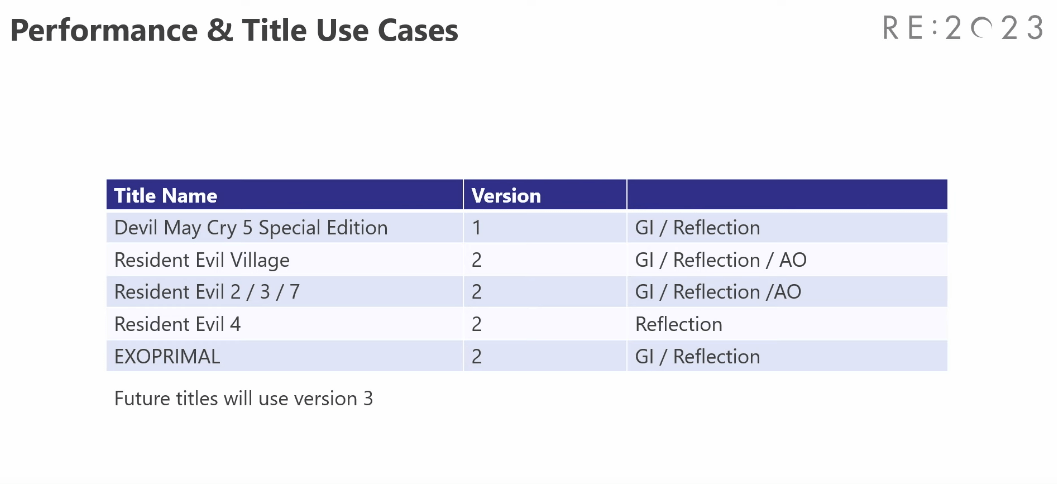The next RE Engine titles from Capcom will support new ray tracing features and improved performance for consoles.
During the RE: 2023 Open Conference, Capcom programmer Eason (Yixiong) Gong detailed the advancements made to RE Engine with respect to ray tracing in his presentation. Besides denoiser improvements to global illumination, auto exposure, specular motion projection, the new version 3 of the engine’s ray tracing implementation brings brand new features and reduces console performance cost.

The presentation highlights that many new features have been added to RE Engine from the rendering unit. In terms of new ray tracing features, mirror transparency is now handled with a separate implementation, where only perfect reflection is supported and no denoiser is used for performance consideration. In addition, according to Gong, visual effects ray tracing is also implemented by the effects team. In most cases, the same denoiser progress is shared after shading. Furthermore, rectangle, disk, and line light are also implemented by another rendering team. Gong mentioned that both direct and indirect area light shadows are now supported by the engine. Lastly, terrain and speed tree ray tracing are now also supported by the engine. The BVH data doesn’t completely match the Gbuffer’s position, therefore a ray offset or additional rays are needed to avoid intersection.
3 iterations of the denoiser have been developed for use in RE Engine games. Version 1 was used in Devil May Cry 5: Special Edition, while all other RE Engine games that have supported ray tracing since then have used version 2. Future titles will use version 3, bringing the improvements and features mentioned above.
The presentation also highlights that the improved version 3 of the denoiser only adds 0.5 ms of total performance cost on PS5 over version 2, with denoiser stabilization and wavelet filtering no longer being needed. The slight additional overall performance cost comes from an additional spatial step for dealing with rays from disocclusion and upscaling.
